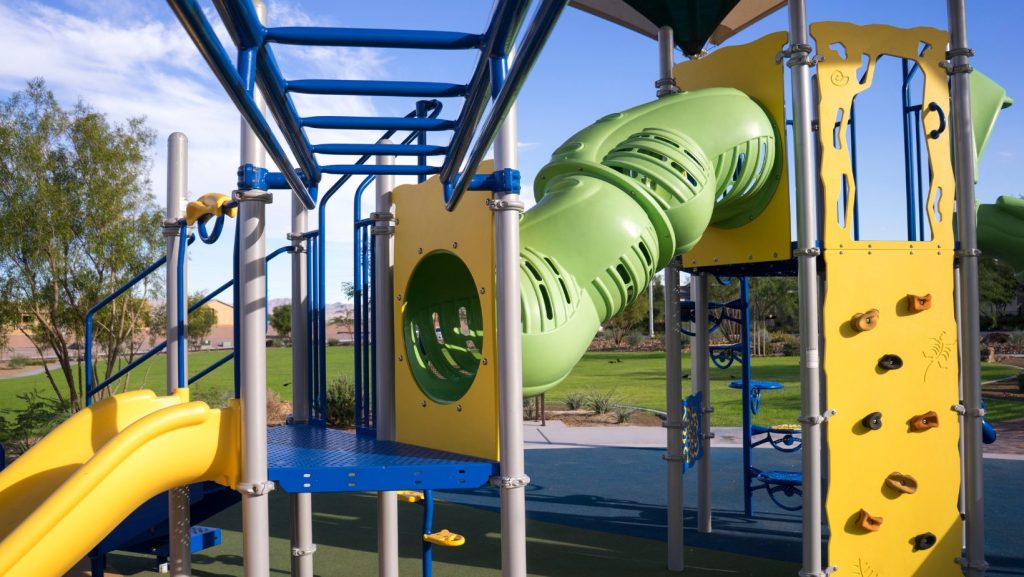
Creating a vibrant and stimulating outdoor playground is more than just picking out colourful slides and swings. It’s about understanding the various types of play children engage in and how different equipment can foster their growth and development. In this blog, we’ll delve into the fascinating world of play and explore how incorporating a diverse range of outdoor playground equipment can inspire children to experience a wide variety of play activities, ultimately boosting their cognitive, social, and physical skills. So, let’s dive in and discover how to design the perfect playground that caters to every child’s unique play style!
The Different Types of Play: An Overview
Play is an essential aspect of a child’s growth and development. It comes in various forms, including physical, social, cognitive, creative, and cooperative play. Each type serves a unique purpose in shaping a child’s personality, skills, and overall well-being. By understanding these different types of play, parents, educators, and playground designers can create environments that cater to a child’s diverse needs and interests, fostering their holistic development.
Climbing Structures: Encouraging Physical and Exploratory Play
Climbing structures, such as plastic climbers and rope ladders, are excellent additions to any outdoor playground. They encourage children to engage in physical activities, helping them develop strength, balance, and coordination. Moreover, these structures promote exploratory play, as kids challenge themselves to conquer new heights and navigate obstacles, boosting their confidence and problem-solving abilities.
Swings and Slides: Promoting Social and Sensory Play
Swings and slides are classic playground staples that facilitate social interactions and sensory experiences. As children take turns, wait in line, and help each other with these equipment pieces, they learn valuable lessons about sharing, cooperation, and communication. Additionally, swings and slides provide a thrilling experience, stimulating a child’s vestibular and proprioceptive senses and contributing to their sensory development.
Sand and Water Play Areas: Stimulating Creative and Imaginative Play
Sand and water play areas offer endless opportunities for children to exercise their creativity and imagination. From building sandcastles to concocting pretend potions, these versatile spaces inspire open-ended play and experimentation. Engaging in these activities helps children develop fine motor skills, spatial awareness, and even early scientific concepts, all while having fun.
Activity Panels & Adventure Tables: Enhancing Cognitive and Cooperative Play
Activity panels and adventure tables are innovative playground equipment designed to boost cognitive and cooperative play among children. Activity panels featuring puzzles, games, or sign language, challenge a child’s mental abilities while encouraging interaction and communication. Similarly, adventure tables offer a fun landscape surface for children to use with toys, fostering imaginative and cooperative play. These adventure tables provide an opportunity for kids to create stories, share ideas, and work together in a social setting. By incorporating activity panels and adventure tables into playground design, we can offer children an engaging and stimulating environment that promotes cognitive growth, teamwork, and social skills, creating a more enriching play experience for all.
Inclusive Playground Equipment: Ensuring Accessible Play for All Abilities
An inclusive playground should cater to children of all abilities, ensuring that every child can participate and enjoy the benefits of play. Adaptive swings, wheelchair-accessible ramps, sensory panels, and ground-level activities are just a few examples of equipment that can make playgrounds more accessible. By incorporating these elements, playgrounds become welcoming spaces where all children feel included and valued.
Creating a Balanced Outdoor Playground: Tips and Considerations
Designing a well-rounded outdoor playground requires careful planning and consideration. It’s essential to include a variety of equipment and play spaces that cater to different interests, abilities, and developmental stages. Keep safety in mind by adhering to playground guidelines and selecting age-appropriate equipment. Finally, consider incorporating natural elements, shade structures, and seating areas to create a comfortable and inviting environment.
The Impact of Play on Child Development: Why It Matters
Play is not just about having fun; it plays a crucial role in a child’s overall development. Through various types of play, children learn essential life skills, such as problem-solving, communication, creativity, and empathy. Moreover, play contributes to their cognitive, physical, social, and emotional growth, laying the foundation for a happy, healthy, and fulfilling life. By providing diverse and engaging outdoor playgrounds, we can positively impact the lives of children and support their journey toward becoming well-rounded individuals.
In conclusion, designing a stimulating and inclusive outdoor playground involves understanding the different types of play and incorporating a diverse range of equipment that meets children’s unique needs and interests. By creating a well-rounded play environment, we can inspire children to explore, learn, and grow while fostering their cognitive, social, and physical development. Our future generations deserve the best opportunities to thrive, and it all starts with a thoughtfully designed playground.
If you’re ready to create a custom outdoor playground that encourages various types of play and caters to every child’s unique style, SPI Plastics is here to help. With our expertise and commitment to quality, safety, and innovation, we can bring your vision to life and design a playground that makes a lasting impact on children’s lives. Contact us today to discuss your project, and let us help you build an exceptional outdoor playground that inspires and nurtures young minds.